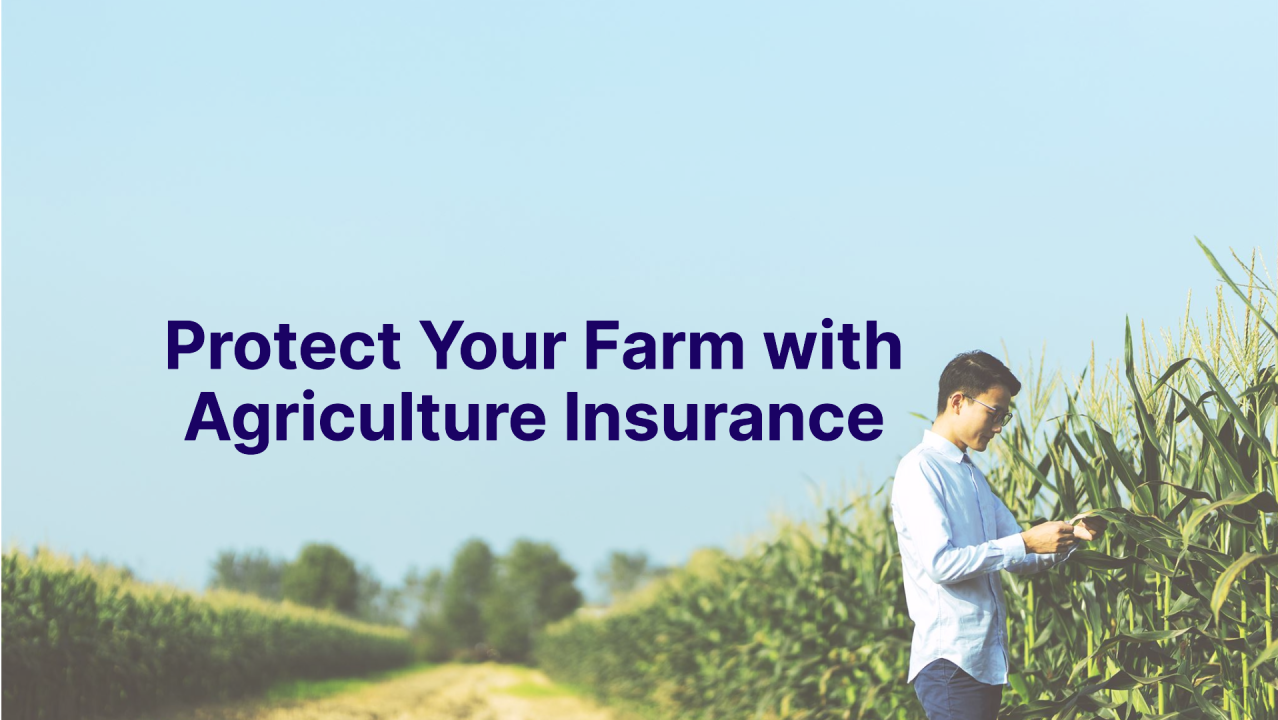Agriculture, the backbone of many economies around the world, is both a vital and risky enterprise. Farmers face a multitude of challenges each growing season, from unpredictable weather patterns and pest infestations to market fluctuations and soil degradation. A single crop failure can have devastating financial consequences, not only for the farmers themselves but for entire communities that rely on agriculture for their livelihoods.
This is where agricultural insurance comes into play — a safety net that helps protect farmers from the financial ruin that can result from crop failures. But how exactly does agricultural insurance work, and why is it so essential for modern farming?
What is Agricultural Insurance?
Agricultural insurance, often referred to as crop insurance, is a policy designed to protect farmers against the risk of crop loss or damage caused by a variety of factors, including weather events (such as drought, floods, and storms), pests, diseases, and other unforeseen circumstances. These policies help farmers recover some or all of the financial losses incurred when crop yields are lower than expected or crops are completely destroyed.
There are two main types of agricultural insurance:
- Crop Yield Insurance: This type of insurance covers losses based on the yield of a particular crop. If the yield falls below a certain threshold (due to factors like weather or pests), the farmer receives compensation based on the difference between the expected and actual yield.
- Revenue Insurance: This more comprehensive form of insurance protects against both yield losses and market price fluctuations. Revenue insurance guarantees a certain level of revenue for the farmer, even if the price of the crop decreases after planting. This is particularly useful in volatile markets where crop prices can change drastically.
Why is Agricultural Insurance So Important?
The significance of agricultural insurance cannot be overstated, especially in the context of modern farming. Here are a few reasons why crop insurance is crucial for farmers:
1. Unpredictable Weather Patterns
Climate change has made weather patterns increasingly erratic and difficult to predict. Farmers now face more extreme weather events, such as intense heatwaves, unexpected frost, heavy rainfall, and prolonged droughts. A farmer’s ability to prepare for such events is limited, and often, the impact of these events can be catastrophic for crop production. Insurance acts as a safeguard against these unpredictable events, ensuring that farmers are not left with crippling financial losses when nature turns against them.
2. Financial Stability for Farmers
Farming is inherently risky, and crop failures can result in serious financial strain. Many farmers take out loans or use savings to fund their operations, and without insurance, a poor harvest can lead to insurmountable debt. By providing financial compensation, agricultural insurance helps to ensure that farmers can survive bad seasons and stay in business, which is critical for both their livelihood and the continued availability of food for consumers.
3. Encouraging Investment in Agriculture
Without the security of insurance, farmers might be less inclined to invest in new technologies, equipment, or sustainable farming practices. Crop insurance gives farmers the confidence to take calculated risks in improving their productivity. For example, they might choose to invest in drought-resistant crops or modern irrigation systems without the fear of losing everything to a drought or other disaster. In this way, agricultural insurance encourages innovation and long-term sustainability in farming practices.
4. Reducing the Risk of Hunger and Food Insecurity
On a broader scale, agricultural insurance helps ensure a stable food supply. When farmers are protected against the financial impacts of crop failures, they are more likely to continue producing food at the necessary scale to meet the needs of local and global populations. Without insurance, large-scale crop failures can lead to food shortages, price hikes, and increased hunger in affected areas. In regions where agriculture is a primary industry, this can have ripple effects throughout the economy, leading to higher unemployment and social unrest.
5. Government Support and Subsidies
In many countries, agricultural insurance is supported by government programs that help farmers reduce the cost of premiums or provide subsidies in the event of a disaster. This support is often crucial, as many small-scale farmers would not be able to afford insurance without such assistance. By investing in agricultural insurance, governments can help stabilize food production and rural economies, ensuring that farming remains viable even in the face of disaster.
The Challenges of Agricultural Insurance
While agricultural insurance has many benefits, it is not without its challenges:
- High Premium Costs: In some regions, the cost of premiums can be prohibitively expensive, especially for small-scale farmers. This can lead to low participation rates in insurance programs, leaving many farmers vulnerable.
- Complexity: Understanding the terms and conditions of agricultural insurance can be complicated. Farmers may need expert advice to choose the right policies and understand the claims process, which can be a barrier, particularly in areas with limited access to agricultural extension services.
- Adverse Selection: Insurance companies may be hesitant to offer policies in areas with high risks (such as regions prone to frequent flooding or drought), which can make it difficult for farmers in those regions to secure affordable coverage.
- Moral Hazard: In some cases, there is the risk that farmers might not take adequate preventative measures (e.g., planting resistant varieties or improving irrigation) if they feel that insurance will cover their losses. This can increase the overall risk for insurers, leading to higher premiums or reduced availability of coverage.
The Future of Agricultural Insurance
The future of agricultural insurance is likely to see significant changes, driven by advancements in technology, data collection, and climate science. For example:
- Remote Sensing and Drones: With the advent of satellite imagery and drone technology, insurers can more accurately assess the health of crops and monitor conditions in real time. This could lead to more precise and efficient claims processing, reducing administrative costs and increasing the accuracy of payouts.
- Climate-Resilient Insurance Products: As climate change continues to impact agriculture, insurance companies are likely to develop more climate-resilient insurance products that take into account long-term environmental shifts. These products may incorporate data on changing weather patterns, soil health, and crop resistance to specific diseases.
- Microinsurance: In developing countries, there is growing interest in microinsurance — affordable, low-cost insurance products aimed at smallholder farmers. These products can provide basic coverage for risks like crop failure, helping farmers in poorer regions manage risk and recover from losses.
Conclusion
Agricultural insurance is an essential tool for farmers, helping them manage the risks inherent in agriculture and providing them with financial protection in the event of crop failure. While there are challenges to making insurance accessible and affordable, the benefits — both for farmers and society as a whole — are undeniable. As the agricultural sector faces increasing risks from climate change, technological innovation in insurance will play a key role in ensuring that farmers can continue to feed the world while safeguarding their livelihoods.



